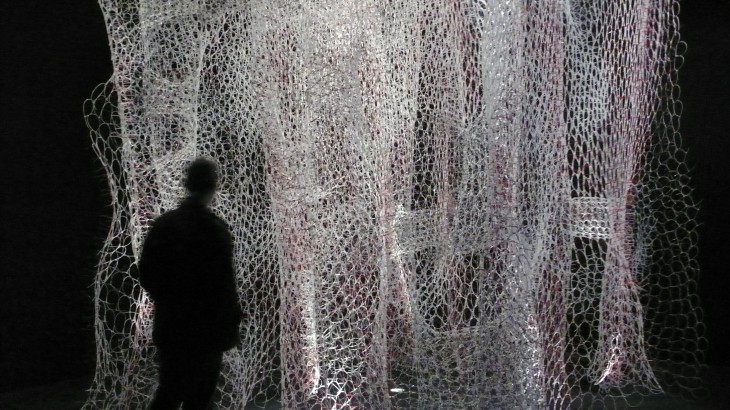“Branching Morphogenesis” is at Ars Electronica, a museum of digital and media arts, in Linz, Austria
‘… the form of an object is a ‘diagram of forces’… D’Arcy Wentworth Thompson
Thompson described growth and form in relation to the study of organisms. He emphasized the evolution as the fundamental determinant of the form and structure of living organisms. He asserts structuralism as an alternative to survival of the fittest in governing the form of species.
According to him Darwinism is not adequate explanation for the origin of new species. He regarded natural selection as a secondary to the origin of biological form.
The text is basically lays on the associated repercussions of environmental pressures and geometrical formations. He established mathematics and physics to map these repercussions. It is described as a means for deciphering an individual course of development or growth. The interpolation between multiple morphometric mappings was outlaid as a means to project potentials in form. This sets two fundamental branches of a conceptual framework for computational geometry. These are parametrics and homologies. A parametric equation is defined as a constant equation in which relational parameters vary. It results in producing families of products where each instance will always carry a particular commonness with others. Thompson defines these embedded relationships as homologies . The framework that emerges encapsulates, within formal rules for geometric organisation, the capacities of form, in physical stature and robustness, and their transformation through external influences.
Similarly, computer-aided design is capturing the geometric relationships that form the foundation of architecture, building upon now-established practices of form-finding and finite element analysis (which breaks down a continuous structure into many simple, linked elements in order to find optimal thicknesses and arrangements of supporting elements). New developments in parametric modeling permit control of design through models that can coordinate and update themselves. These systems can automatically update the entire model or drawing set based on changes as small as a joint or as large as the entire floor plan, offering flexible design of deeply nested relationships. In much the same way that mutations in nature generate biodiversity, individual variation in architectural components can be achieved economically. Parametric design practice employs ‘dependency’ networks similar to the complex process diagrams used to express relationships in natural systems, offering increasingly fine-tuned approaches to building component design. Using these tools, architectural disciplines are poised to work with increasing effectiveness in responsive, interactive systems.
I find this possibility really interesting. In particular I have always been interested in evolution, and the history of the Earth millions of years ago. Perhaps mathematical form is an element of the missing map, or perhaps this idea could be applied to filling in some of the gaps. It has exponential possibilities in the world of parametric design, and the possibility of the built form. We are increasingly interested in achieving organic form, and perhaps this better understanding of nature and mathematics will help us.
My possible personal research topic: How does the architectural discourse engage in a recovery of ecology in its original framing in the context of morphology? The Morphological Context of Environmental Architecture

